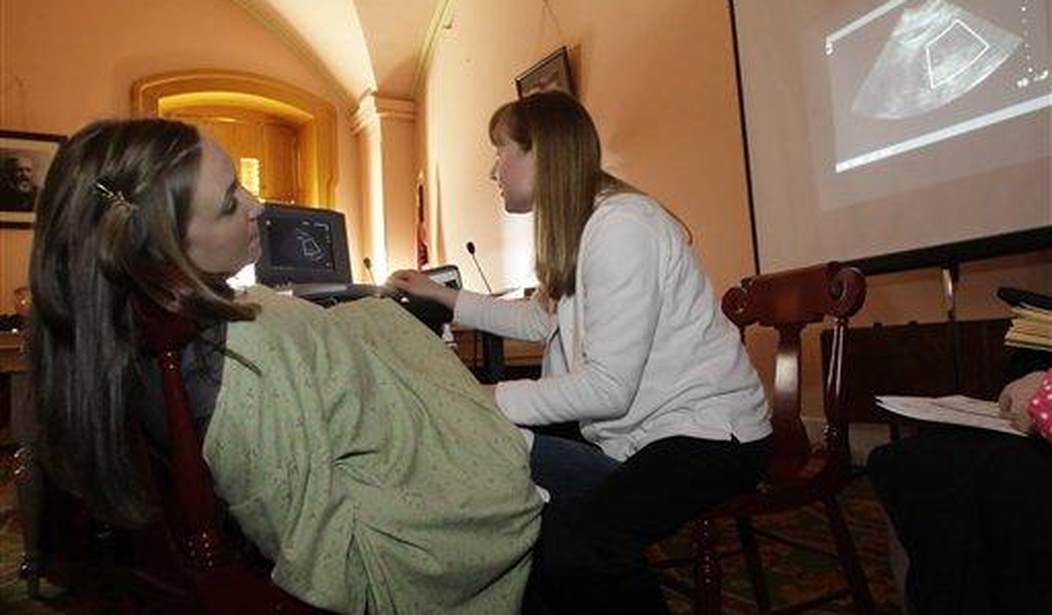That does not count the 40.6 percent of babies born in 2013 who were also born to unmarried mothers.
In fact, according to the Centers for Disease Control and Prevention, at least 40 percent of the babies born in each of the last six years -- 2008, 2009, 2010, 2011, 2012 and 2013 -- were born to unmarried mothers.
Back in 1940, only 3.8 percent of American babies were born to unmarried mothers. By 1960, it was still only 5.3 percent.
The curve that tracks the increasing percentage of babies born to unmarried mothers starts to bend upward in the mid-1960s. By 1965, it was 7.7 percent. By 1969, it was 10 percent. By 1975, it was 14.3 percent.
It broke 20 percent in 1983; 30 percent in 1992; and 40 percent in 2008. That year it was 40.6 percent. In 2009, it was 41.0 percent. In 2010, it was 40.8 percent. In 2011, it was 40.7 percent. In 2012, it was 40.7 percent. And in 2013, it was 40.6 percent.
It is a statistical fact that the institution of the family has been collapsing in America over the past 45 years.
In July 1960, the United States had a population of 180,671,158, according to the Census Bureau. That year, according to the CDC, 4,257,850 babies were born in the country. Of those babies, 224,300 -- or 5.3 percent -- were born to unmarried mothers.
By July 1964, the national population had grown to 191,888,791. That year, 4,027,490 babies were born, and 275,700 of them -- or 6.9 percent -- were born to unmarried mothers.
Recommended
By July 2012, according to the Census Bureau, the population of the country had grown to 313,914,040. But, according to the CDC, there were fewer babies born that year -- 3,952,841 -- than had been born in 1960 -- when the country only had 180,671,158 people. Of those 3,952,841 babies born in 2012, 1,609,619 -- or 40.7 percent -- were born to unmarried mothers.
As the traditional family has receded from its historical role as the foundation of our society, what has taken its place? Government.
In its latest annual report to Congress on "Welfare Indicators and Risk Factors," the Department of Health and Human Services pointed to the high rate of births to unmarried mothers, saying "data on nonmarital births are important since historically a high proportion of welfare recipients first became parents outside of marriage."
"Historically a high percentage of AFDC/TANF recipients first became parents outside of marriage," said this HHS report. "In 1940, 3.8 percent of births were to unmarried women. Beginning in 1960, this percentage began to increase, reaching 32.6 percent by 1992. It remained steady for a few years, before rising to 40.7 percent in 2011."
As noted recently in this column, the Census Bureau has reported that 109,631,000 Americans as of the fourth quarter of 2012 lived in households that received benefits from one or more means-tested government programs, including Medicaid, food stamps, WIC, SSI, public housing, TANF and other forms of federal cash assistance. Those 109,631,000 people in households getting means-tested government benefits equaled 35.4 percent of the overall population.
There is no doubt that many individuals, through courage, perseverance and hard work, overcome the disadvantage of being born into a single-parent household.
It is also true that there are people in government who rather than let us raise our own children would prefer to raise them for us -- to fit their own models of virtue and excellence.
Yet if America continues to turn away from the traditional family, we will never turn back to limited government and the liberty that goes with it.
Terence P. Jeffrey is the editor in chief of CNSnews.com. To find out more about him, visit the Creators Syndicate web page at www.creators.com.
COPYRIGHT 2014 CREATORS.COM
























Join the conversation as a VIP Member